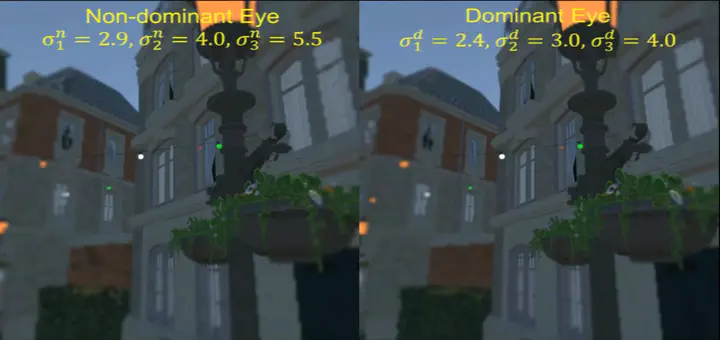DEAMP: Dominant-Eye-Aware Foveated Rendering with Multi-Parameter Optimization

Abstract
The increasing use of high-resolution displays and the demand for interactive frame rates presents a major challenge to widespread adoption of virtual reality. Foveated rendering address this issue by lowering pixel sampling rate at the periphery of the display. However, existing techniques do not fully exploit the feature of human binocular vision, i.e., the dominant eye. In this paper, we propose a Dominant-Eye-Aware foveated rendering method optimized with Multi-Parameter foveation (DEAMP). Specifically, we control the level of foveation for both eyes with two distinct sets of foveation parameters. To achieve this, each eye’s visual field is divided into three nested layers based on eccentricity. Multiple parameters govern the level of foveation of each layer, respectively. We conduct user studies to evaluate our method. Experimental results demonstrate that DEAMP is superior in terms of rendering time and reduces the disparity between pixel sampling rate and the visual acuity fall-off model while maintaining the perceptual quality.